Plugging into the future - what is it like to drive an electric car around Leeds?
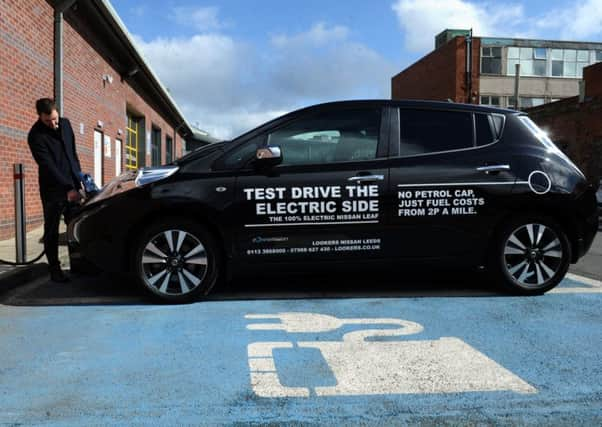

However, efforts to get people to give electric cars a chance are being accelerated - pushed both by rapidly-improving technology and the increasingly urgent need to tackle the country’s deadly air pollution epidemic, which has diesel vehicles as one of its primary drivers.
Officials from the Energy Saving Trust and the National Franchised Dealers Association Trusted Dealers have been in Leeds as part of a nationwide ‘myth-busting’ tour designed to encourage more motorists to consider going electric, including the Yorkshire Post. I took a Nissan Leaf, an entirely battery-powered car that is one of the market leaders in the field of electric vehicles, for an overnight test drive.
Advertisement
Hide AdAdvertisement
Hide AdLeeds is one of five places that are to be turned into ‘Clean Air Zones’ by 2020. Congestion charges are on the way for polluting lorries and taxis, while initiatives will be pursued to encourage drivers to ditch diesel vehicles. But those plans could be further accelerated in the coming days - the Government has until Tuesday to publish a revised draft air pollution strategy.
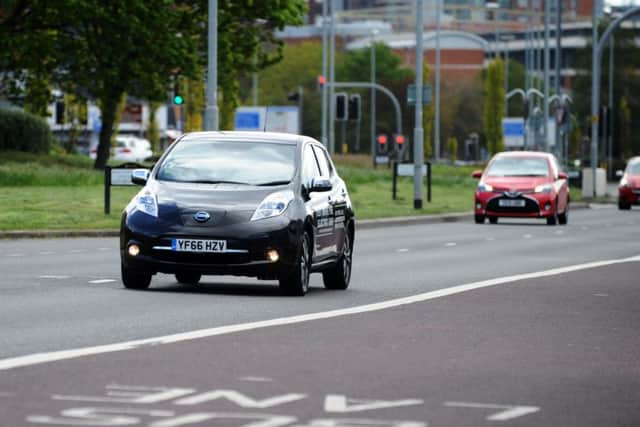

Nitrogen dioxide pollution, largely from diesel traffic, is linked to the premature deaths of more than 60 people per day and ultra-low emission vehicles are at the heart of the national strategy to tackle air pollution and it is hoped that by 2040, every new car and van sold will be zero emission.
Lees Council is already attempting to get more people using electric vehicles, with free parking offered to owners of zero and ultra-low emission vehicles at council-operated car parks. More than 250 permits have been issued since the scheme was launched in March 2016.
I headed home in the Leaf to Sheffield, another Yorkshire city plagued by air pollution problems. As promised, I found there is such a thing as the ‘EV grin’ - the automatic car is extremely easy to drive and incredibly quiet as well compared to the usual sound made by a petrol engine. It managed to cover the 40-mile distance, much of it along the motorway, with relative ease; using less than half the car’s battery and getting up to speeds of 70mph in a similar manner to a conventional car.
Advertisement
Hide AdAdvertisement
Hide AdBut taking the vehicle overnight also revealed some of the limitations that are holding electric cars back from mass market appeal just yet.
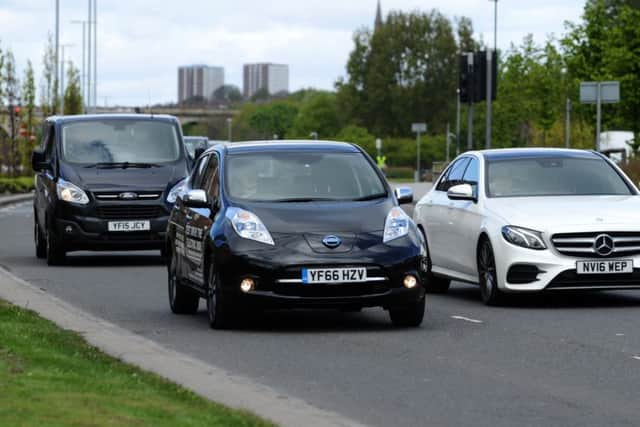

The vehicles are designed to be charged up overnight at home, providing enough battery life for the vast majority of drivers to be able to get through the day without needing any top-up. But unfortunately such charging cannot realistically be achieved unless you have a drive or a garage and like around 30 per cent of UK households, our home does not have off-street parking - a major barrier to owning an electric car.
The result of this was setting off early to work the following morning to drop in at a nearby Asda store which has free charging points. The staff were somewhat surprised to be asked for assistance with getting the vehicle to charge (owners are provided with a card that allows them to start the charging machines that I didn’t get on the test drive) and once a staff member who knew how to get the machines to work arrived a few minutes later and helped me get plugged in, I headed inside to the cafe to have a coffee for 20 minutes.
There are more than 12,000 public charging points across the country for electric vehicles, with the most powerful capable of charging the battery to 80 per cent in 30 minutes. Unfortunately for me, the one I used at Asda did not fall into this category and I was rather disappointed to see the battery charge had gone up from 53 per cent to just 57 per cent in the time I had waited - an increase that was wiped out by the time I got to the M1 to head north to Leeds.
Advertisement
Hide AdAdvertisement
Hide AdIt led to a rather cautious drive back up to West Yorkshire with eyes constantly flickering to the dashboard to see how the battery life was holding up, especially as I negotiated uphill sections of the M1. However, to the car’s credit, I managed to make it back with just over 10 per cent of battery life remaining. The vehicle’s sat-nav also includes a feature which shows up the nearest available charging points, meaning running out of power should never be a serious prospect.
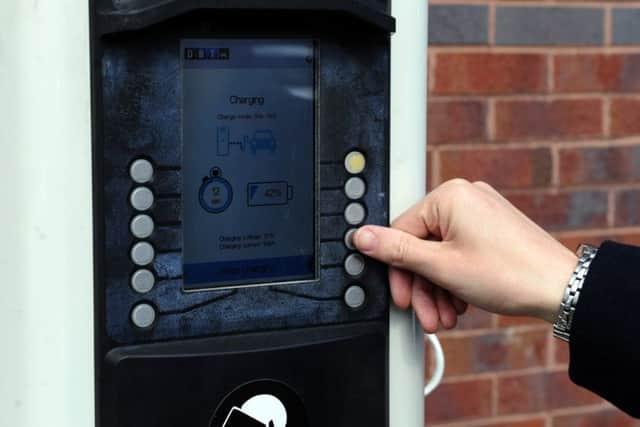

Currently, Nissan Leaf vehicles can officially go up to 155 miles on a single charge, although the reality they can only make about 75 per cent of that distance when things like using windscreen wipers, heating and lights are taken into account. But one of its rivals in the electric car market, the Renault Zoe, is promoted of being technically capable of doing 250 miles.
While the guide price for a new Nissan Leaf with the larger 30kWh battery starts from almost £30,000, there is a £4,500 grant available from the Government for buyers of new electric cars. Those who buy the vehicles are also attracted by running costs that are just one-quarter of conventional petrol or diesel vehicles.
And sales are increasing. New registrations of plug-in cars have gone up from around 3,500 in 2013 to nearly 95,000 by March this year. However, with electric cars making up around 1.5 per cent of the new car market, there is plenty of work still to be done to convince motorists to go electric.
Advertisement
Hide AdAdvertisement
Hide AdChris Brown, EV manager for the Lookers Nissan group, says: “There is still a lot of public negativity that is unjust and which we find very frustrating. Once we get over the 200-mile mark, it makes the car available for everyone. But most people don’t do more than 50 miles in a day.
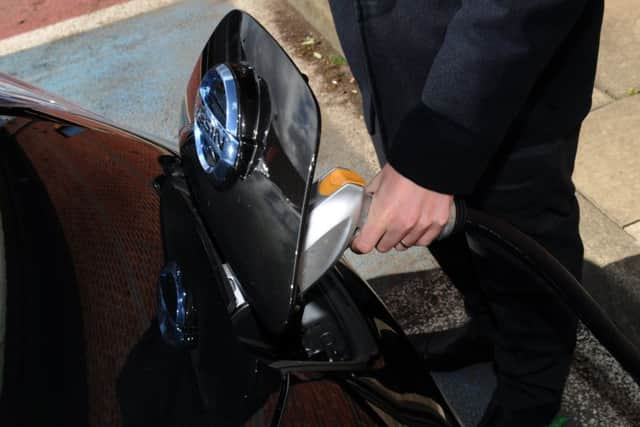

“Feedback is exceptional once people are in the vehicle. The main issue we have is getting people to drive the car. We let people have a three-day test drive completely free and that is what changes people’s perceptions.”
Paul Gambrell, transport consultancy manager at the Energy Saving Trust, gave a talk to an audience at Lookers Nissans showroom on Kirkstall Road in Leeds as part of the national roadshow.
He said: “You can save a lot of money and a lot of harmful emissions at the same time. People are shocked how easy they are to drive and how quiet they are. It is something that you have got to try to be able to understand.
Advertisement
Hide AdAdvertisement
Hide Ad“Most people now think of it like a mobile phone, you plug it in at home, charge it up and only very occasionally need emergency charging.”
For me, the parallel with phones does not just extend to charging. In the same way that the clunky mobiles of the 1980s and 1990s provoked derision before technological advances turned them into must-have gadgets, it is clear the vehicles are fast approaching a tipping point where what once was quirky and unusual will become mainstream.
The future is already here - it just doesn’t quite work perfectly for everyone yet.
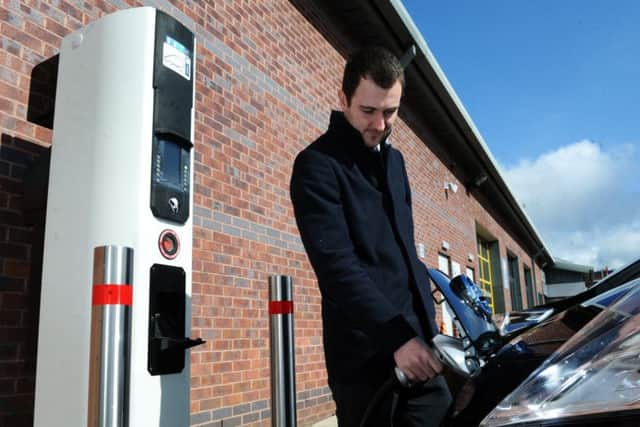

Bridging the ‘confidence gap’
Charging times for electric vehicles will be reduced in the next couple of years - making the cars more attractive to consumers.
Advertisement
Hide AdAdvertisement
Hide AdAndrew Benfield, group director of transport at the Energy Saving Trust, admits finding viable charging solutions for the cars is key to “bridging the confidence gap in the next couple of years”.
“For a reasonable chunk of people, it is difficult to charge at home because you don’t have off-road parking. Overnight charging is the most cost-effective way of running an electric vehicle.
“Some of the technology is at a fairly new stage. There are things like lamppost charging, which allows you to charge where you are parked. It is moving very fast and there are various plans on the table.”
Benfield adds things are already changing quickly in terms of the cars’ performance.
Advertisement
Hide AdAdvertisement
Hide Ad“The rate of change has been pretty phenomenal. The first electric cars were a bit of a laughing stock. We have gone from there to things like the Renault Zoe which has broken the 200-mile range. That has happened in the last two years, not in the last ten.
“People want to see charging that is viable and on their certain route. We are so used to petrol stations and knowing where they are. In the next couple of years, speeds will increase and charging times will reduce. It is going to get closer to the current refuelling experience.
“It definitely is entering the public consciousness that they need to think about the type of vehicle they use and the type of fuel. Clean Air Zones are getting people to think about whether a smaller petrol car or an older diesel is the best way to do 5,000 miles a year.
“The Zoe will do 180 miles in the real world on one charge, for a lot of people that is more than sufficient.
Advertisement
Hide AdAdvertisement
Hide Ad“These things are cheap to run, if you are concerned about local air quality or the local environment, these vehicles are clean and green, simple to drive and simple to maintain. If these vehicles suit your lifestyle, there are a whole range of benefits. It is win-win-win.”